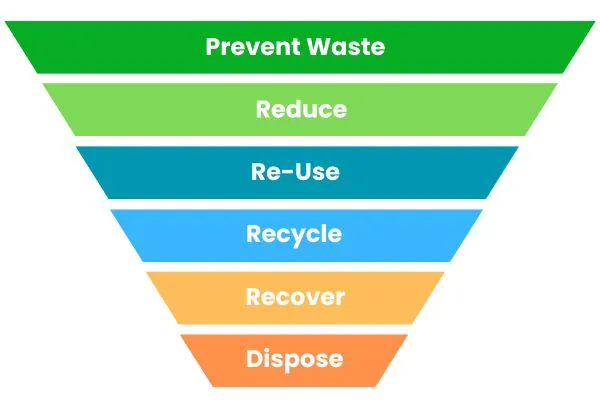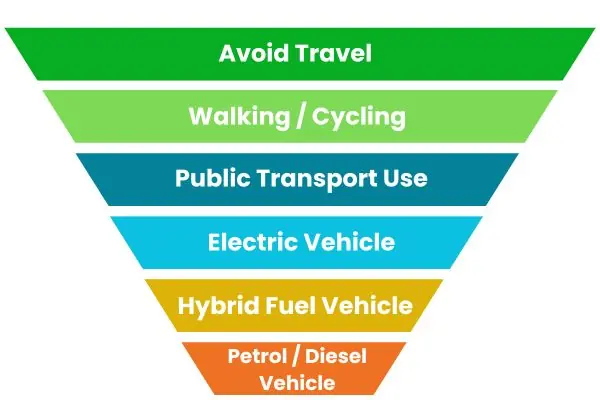Sustainability For Small Businesses: Useful Actions To Take
Building sustainability into small businesses is not just an environmental benefit, but also a strategic move that can lead to long-term benefits. This includes cost savings, enhanced brand reputation, and increased customer loyalty.
While small businesses may face unique challenges compared to larger organisations, they also have the flexibility to adapt quickly and innovate. Here’s our guide to how small businesses can best integrate sustainability into their operations.
1. Assess Current Practices and Set Goals

Establish Your Baseline
The first step in implementing sustainability is to assess your current practices.
Resources You Directly Use: You can identify your energy and water use from billing and meters. Energy includes any sources used to heat and power properties, as well as any extra fuels you many use for specific tasks, such as propane gas. Also consider the energy you may use to fuel or charge company vehicles.
Your Supply Chain: Beyond the resources within your direct control, much of your potential impact will lay in your supply chain, so look to map out the supply chains your business is dependant upon.
Waste Production: Identify regular waste volumes if possible. This can be tricky depending on how specific you go. Easiest is just to simply log the number of full bins you dispose of at regular intervals, through to the tricker task of figuring out waste weight and calculating carbon emission impact.
Environmental Impact From Land: If you have land under your control as a business then first off its good to identify the general impact you have on this land. For example, is it just land retained in its natural state, or do you actively manage it. If you do then are there any activities you carry out to boost its value to nature.
Baseline assessment of these key areas will provide valuable insights into where your business stands and importantly where you have opportunities to improve.
Setting Goals
Once you have a clear picture of your current status, set realistic and measurable sustainability goals.
These goals should align with your business values and operational capacity. Examples might include reducing energy consumption by 20% in the next year, switching to 100% recyclable packaging, or sourcing 50% of materials from local suppliers.
Setting specific, time-bound goals ensures that efforts are focused and measurable, enabling you to track progress and make necessary adjustments.
Importantly, remember sustainability isn’t just about environmental impact, social and economic benefits also unpin successful goals.

So make sure they are practical goals – don’t set goals that are unrealistic to achieve or are likely to undermine the business itself.
2. Engage and Educate Employees

Sustainability initiatives are more successful when everyone in the business is on board, so be sure to engage with them in the process of assessment and goal setting.
This can be done through regular training sessions, workshops, and internal communication. Make sure any training planned is interactive and relevant to their roles. This helps foster engagement and commitment.
Encourage employees to share their ideas and suggestions for making the business more sustainable. This participatory approach not only garners buy-in but also taps into the collective creativity and knowledge of your workforce.
One concept that often proves effective is to create a ‘green team’ or sustainability lead in the business. Ultimately, resources in small business can be highly focused on the day-to-day, so the aim is not for this to burden key roles.
Rather, the aim is for those most enthused about the topic being empowered to help to coordinate ideas coming through and drive them forward fairly.
3. Optimize Energy Usage

Reducing energy consumption is one of the most effective ways to enhance sustainability.
Simple measures such as switching to energy-efficient lighting, using programmable thermostats, and ensuring that equipment and appliances are turned off when not in use can lead to significant savings against your baseline.
Additionally, consider investing in energy-efficient equipment and appliances, which, although may require upfront costs, offer long-term savings and reduced environmental impact.
If possible, consider investing in renewable energy sources at company sites, such as offices. In most cases this means have solar panels installed, which can be a worthwhile long-term investment and boost the resilience of your site. Many governments offer incentives and rebates for businesses to do this, so double check on google or with potential installers for options.
Beyond installing renewable renewable energy onsite, you can also consider moving your electricity supply over to a renewable or green tariff. You can find more guidance on this in our Net Zero Business guide here.
Purchasing carbon offsets to counter-balance required fuel use, such as gas, is also option. You can learn more about this in our guide to offsetting here.
4. Minimise Your Waste

Waste reduction is crucial for sustainability. A robust waste reduction programme will be based on the below hierarchy:

This hierarchy works on premise that avoiding waste is of course the idea scenario, whilst recovery (general waste incinerated for energy) and finally disposal (i.e. landfill) should be prevented as much as possible.
Some simple actions you can take up include:
Ultimately, every business is unique and has its own opportunities to reduce waste. You will know what is right for your business better than anyone else.
5. Sustainable Sourcing In Small Business

Review your supply chain and opt for suppliers who prioritise sustainability where possible.
This could mean sourcing materials locally to reduce transportation emissions, or choosing suppliers who use eco-friendly materials and practices.
Establishing strong relationships with sustainable suppliers can also highlight practices that you could apply in your own business.
6. Eco-friendly Products and Services

Revaluate your products and services to identify opportunities for making them more sustainable.
This might involve redesigning products to use fewer resources, opting for biodegradable materials, or offering eco-friendly alternatives. Services can also be made more sustainable by incorporating green practices into your operations, such as reducing water usage or minimising emissions.
Communicate these efforts to your customer base, demonstrating your commitment to sustainability. Doing so can enhance and differentiate your brand, attracting environmentally conscious consumers.
Do though be sure not to exaggerate your efforts. Transparency about the extent and true value of your efforts is key, else you may damage your brand rather than enhance it.
7. Transportation and Logistics

Transportation is a significant contributor to carbon emissions.
Small businesses can adopt more sustainable logistics practices by optimising delivery routes, consolidating shipments, and using fuel-efficient vehicles.
Encourage employees to use public transport, carpool, or bike to work by offering incentives such as subsidized transit passes or bike storage facilities.
The below model is an approach you can use to visualise the hierarchy of travelling sustainability:

Avoiding the need to travel is most often achieved by office based businesses through remote work policies, reducing the need for commuting. Other businesses, such as trades, of course have the need to travel to work sites.
In this case, when vehicle use is needed, electric vehicles (EV) can deliver sustainable gains. There use is though dependant on availability of sufficient charging points in your region.
This is a general model, which you can adapt if needed. For example some businesses my have considerations to make around pool vehicle use or vehicles powered by hydrogen.
8. Monitor and Report Progress

Monitoring progress is essential to ensure that your sustainability initiatives are effective.
Set up a system to track key performance indicators (KPIs) related to your sustainability goals, e.g. reduce electricity use from planned efficiency measures.
Regularly review and analyse this KPI data to identify ongoing improvements and strategy adjustments. Some businesses use specialised software to do this, but most can simply use regular office software such as word and excel spreadsheets.
Aim to report your progress at least annually. This keeps your team accountable, as well as building trust with customers and stakeholders.
You can consider presenting this in the form of an annual sustainability report, highlighting your achievements, challenges, and future goals.
Before doing so though, consider who would want to read it – there are many long wordy reports out there that no one reads, the best are short and to the point.
9. Community Engagement and Partnerships

Aim to engage with the local community and other businesses to promote sustainability beyond your immediate operations.
Examples include participating in community clean-up events, and supporting local green initiatives. This can enhance your reputation and support engagement of your team.
Networking with other small businesses to share best practices and collaborate on sustainability projects can also be beneficial. Some areas already have local green business network, or broader networks with sustainability aims. If there isn’t one available, consider forming one! They can provide access to expertise, support, and resources.
Sustainable Actions, Sustainable Business

Implementing sustainability in small businesses requires a strategic approach, but the benefits far outweigh the challenges.
By embracing the range of recommendations we have described, small businesses can make significant strides toward a more sustainable future.
In doing so, you not only help protect the environment, but also strengthening the business by attracting conscientious customers and improving operational efficiency.
This positions sustainably minded businesses better able to thrive in a rapidly changing marketplace.
To support you further, you should also check out these bonus resources:
Sustainability Fundamentals Explained
40 Easy Sustainability Ideas For The Workplace
Net Zero Business: A Simply Guide to Getting Started
Good luck and let us know how you get on in the comments section below, or through our social media channels linked at the bottom of this page!






